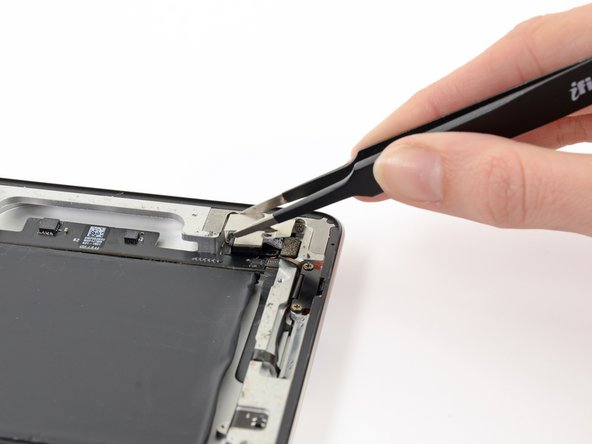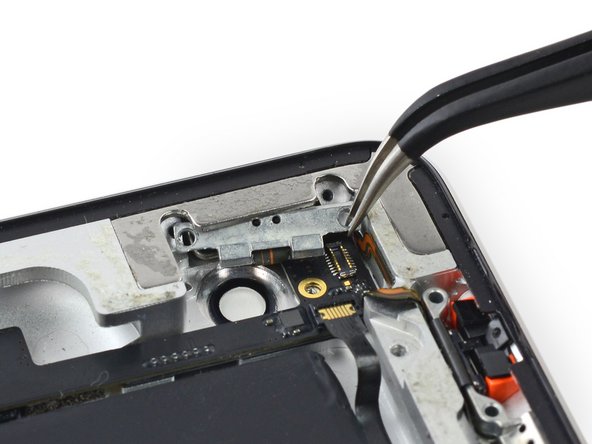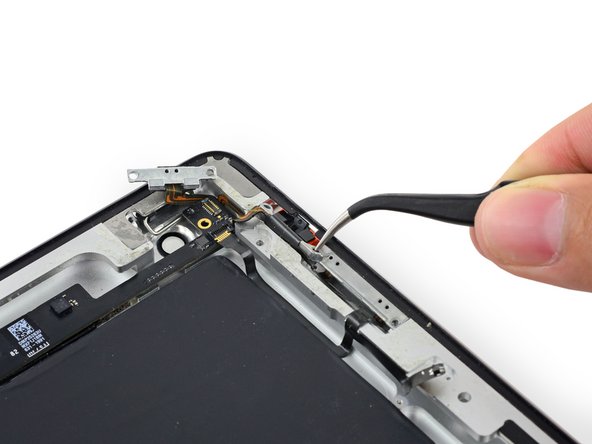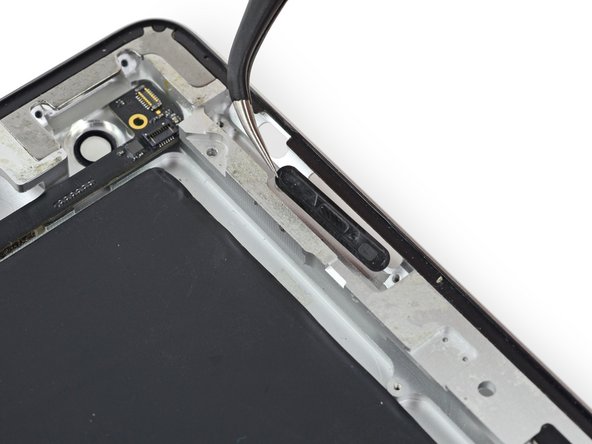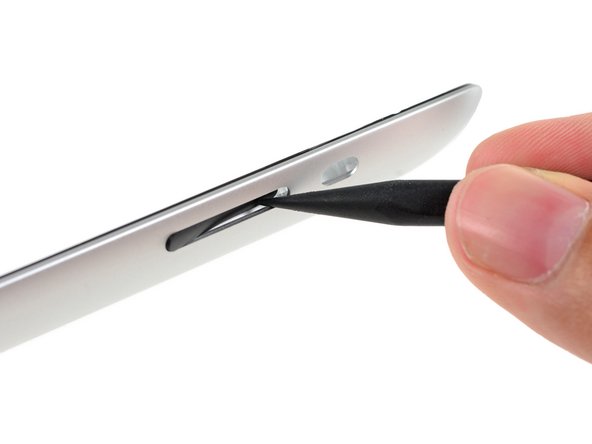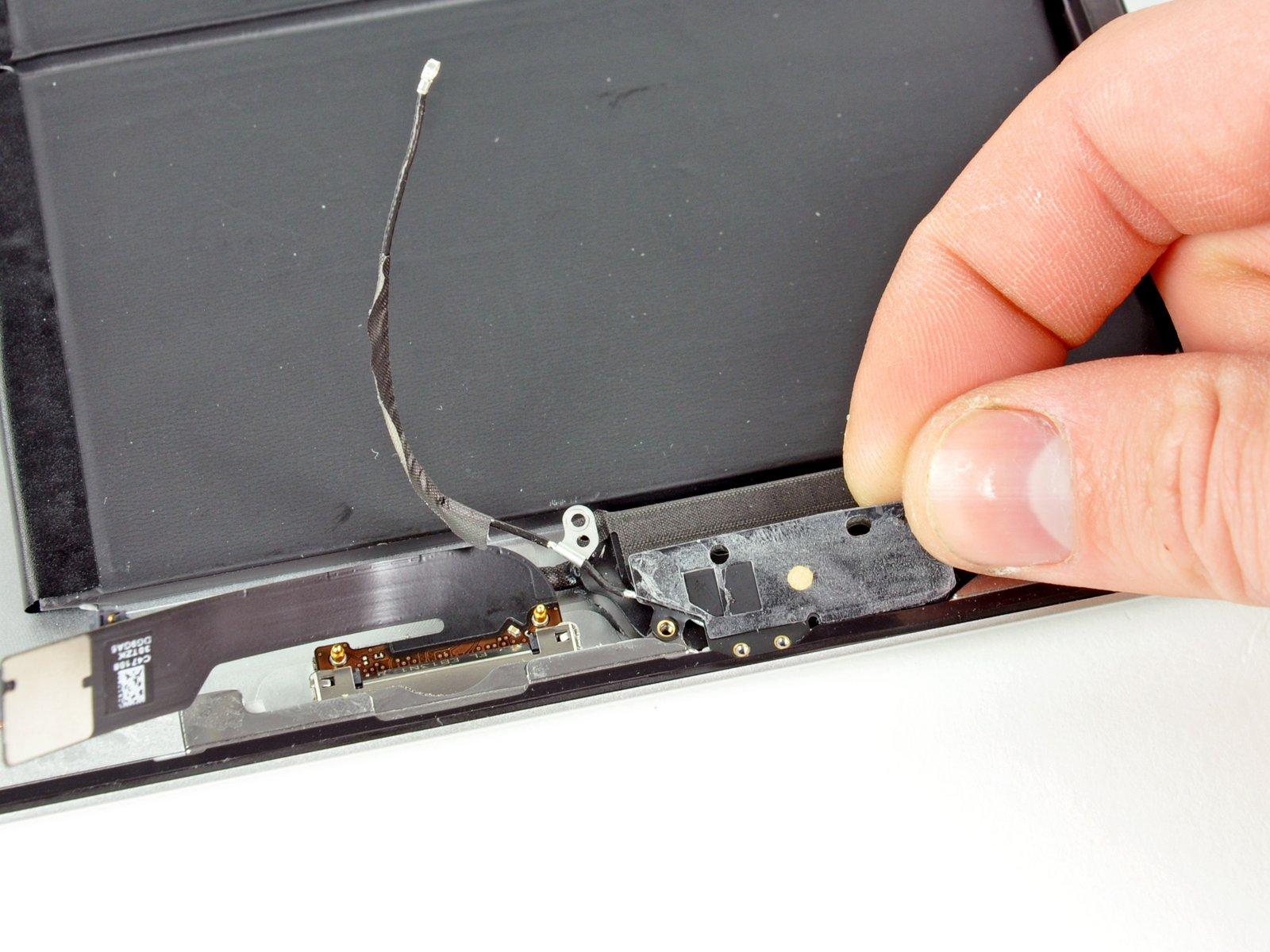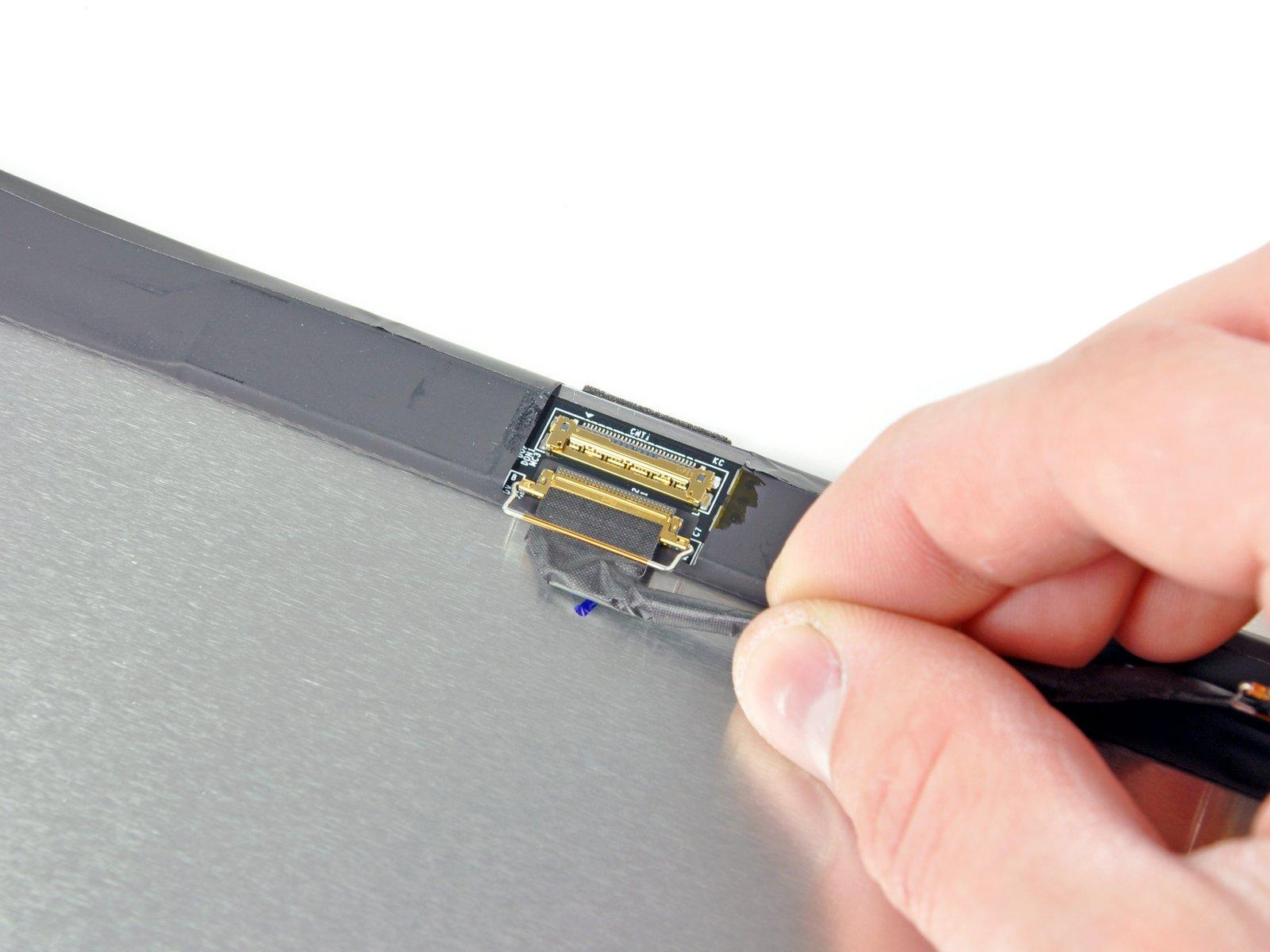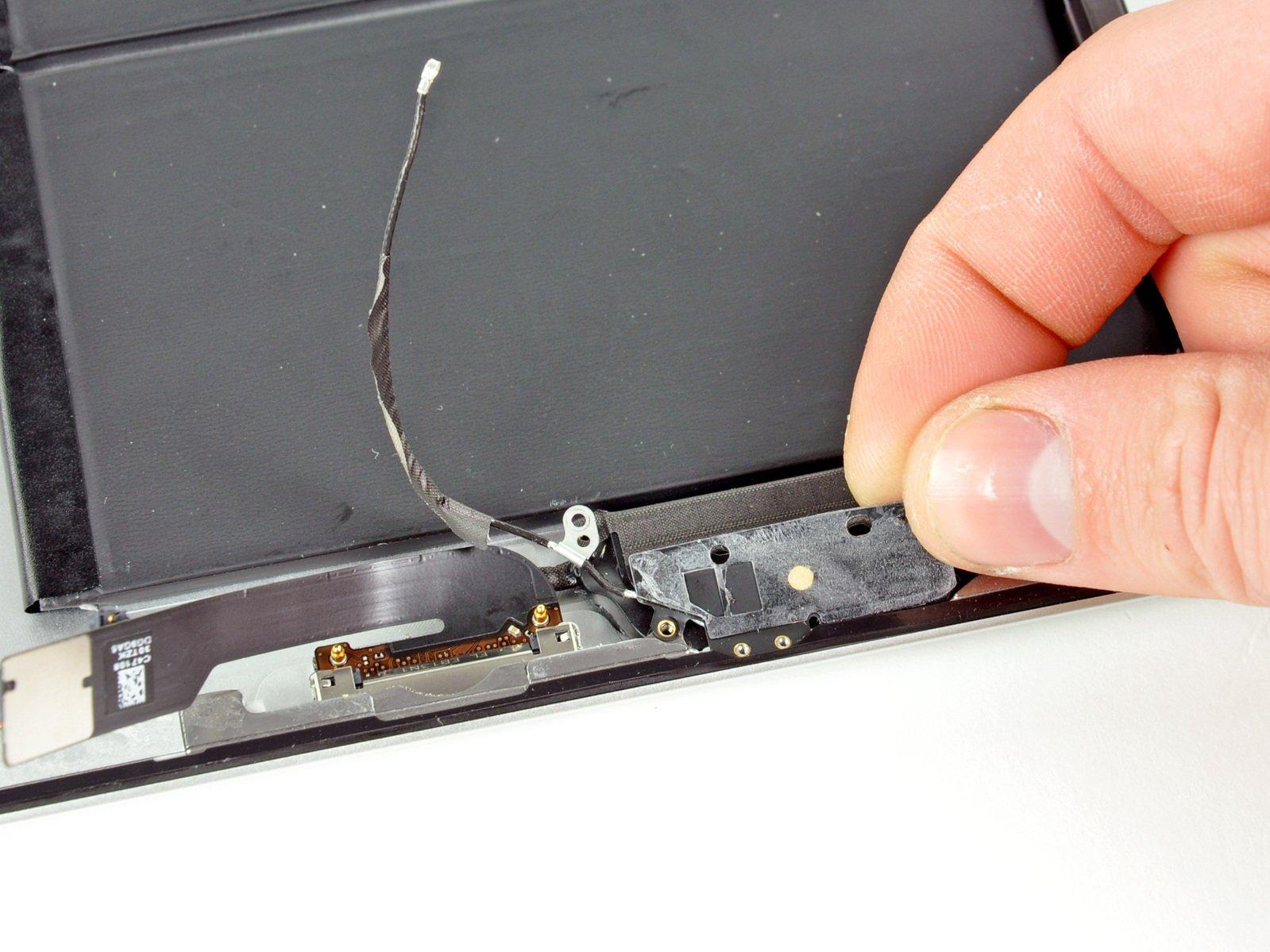How to Replace iPad 2 Wi-Fi EMC 2560 Volume and Power Button Cable
Duration: 45 minutes
Steps: 50 Steps
Heads up! When diving into this repair adventure, make sure you’re working in a cozy spot with plenty of light. Keep those tiny screws organized and don’t forget to take breaks – you got this! And if you find yourself in a pickle, remember, you can always schedule a repair for some expert help!
Ready to tackle the challenge of replacing the volume and power button cable assembly in your iPad 2 Wi-Fi EMC 2560? You’ve got this! This assembly not only does the heavy lifting for your buttons but also houses the sensor that detects the magnet in your Smart Cover. If you need help, you can always schedule a repair.
Step 1
It’s a good idea to give your microwave a little scrub-a-dub before you dive in. Any stubborn residue on the bottom might just hitch a ride on the iOpener. Let’s keep things clean and smooth sailing!
– Pop the iOpener right in the middle of the microwave, and let the magic happen!
Tools Used
Step 2
Hey there! Just a quick reminder: keep an eye on the iOpener during your repair adventure. Too much heat can lead to an unexpected pop! Make sure it doesn’t get hotter than 100˚C (212˚F).
If the iOpener looks like it’s been hitting the gym and is a bit swollen, steer clear of it.
If the center of the iOpener is still too toasty for your fingers, hang tight and let it cool down a bit before giving it another heat session. A well-heated iOpener should keep things cozy for about 10 minutes.
– Give that iOpener a warm-up in the microwave for thirty seconds.
– As you work through the repair, keep the iOpener cozy by reheating it in the microwave for another thirty seconds whenever it starts to cool down.
Tools Used
Step 3
Careful now! The iOpener is going to be quite toasty, so handle it with care. An oven mitt might just be your new best friend!
– Carefully take the iOpener out of the microwave, gripping one of the flat ends to keep your fingers safe from the hot middle.
Tools Used
Step 4
If you’re missing a microwave, no worries! Just pop your iOpener into some boiling water to give it a nice warm-up.
– Grab a pot or pan and fill it up with enough water to give your iOpener a nice bath.
– Bring that water to a boil, then turn off the heat—safety first!
– Gently place the iOpener into the steaming hot water for about 2-3 minutes. Make sure it’s having a good soak down there.
– Using some tongs, carefully lift the warm iOpener out of the water. Watch out, it’s hot stuff!
– Give your iOpener a thorough drying with a towel. We want it nice and dry before use.
– And voilà! Your iOpener is all set to go! If it needs a little more heat, just repeat the water boiling and soaking process for another 2-3 minutes. If you need help, you can always schedule a repair.
Tools Used
Step 5
Put on those safety glasses to keep your peepers safe, and watch out for that LCD screen—let’s not add any extra cracks to the collection!
– If your display glass is cracked, let’s keep it from shattering further and avoid any unexpected injuries during your repair. Grab some tape and secure that glass!
– Apply overlapping strips of clear packing tape across the iPad’s display until the entire front is covered. It’s like giving it a protective hug!
– Do your best to stick to the rest of the guide as outlined. Just a heads up, once the glass is broken, it might keep cracking while you work. You may need to get a metal prying tool to carefully scoop out the glass.
Step 6
Just a heads-up! While you’re getting into the groove of this repair, keep in mind that you might be dealing with some sharp glass. So, why not rock those safety glasses to keep your peepers safe from any flying bits?
– Place the iOpener flat against the right edge of your iPad, making sure it makes solid contact with the surface. We want that heat to do its magic!
– Give it a little time—about 90 seconds should do the trick—before you start prying open the front panel. Patience is key here!
Tools Used
Step 7
Getting that stubborn tip of the opening tool between the glass and plastic might need a little muscle. Take your time and be gentle, giving the plastic opening tool a little wiggle as needed. You’ve got this!
– Hey there! Spotting a little gap in the iPad’s adhesive ring in the upper right corner? It’s about 2.0 inches (~5 cm) from the top. Let’s make use of that sneaky little opening!
– Now, line up your tool with the mute button. Gently slide the tip of a plastic opening tool into that gap between the front glass and the plastic bezel. Just nudge the very tip in, enough to give that crack a little extra room to breathe.
Step 9
– With the tip of your trusty plastic opening tool snugly wedged between the front glass and plastic bezel, slide a plastic opening pick into that gap, right alongside the tool. You’re doing great!
Step 10
– Gently take out the plastic opening tool from your iPad, then slide the opening pick in a little deeper under the front glass—aim for about 0.5 inches down. You’ve got this!
Step 12
This adhesive is super strong, so you might need to channel your inner superhero! Just take your time and be gentle with it.
If you spot the tip of the opening pick peeking under the front glass, give it a gentle tug to pull it out a smidge. Don’t worry, using the pick this way won’t cause any harm, but it might leave a little adhesive residue on the LCD. Just keep that in mind as you work your magic! And remember, if you need help, you can always schedule a repair.
– While the bottom edge is soaking up some warmth from the iOpener, let’s start peeling away the adhesive from the right edge of the iPad.
– Gently glide the opening pick down the edge of the iPad, freeing the adhesive as you go along.
Tools Used
Step 13
You might find it helpful to slide the warmed iOpener back onto the right edge of the iPad while peeling away the adhesive. This will depend on how long your iPad has been taking a breather while you’ve been busy working on it.
– If your trusty opening pick is feeling a bit too snug in the adhesive, just give it a little ‘roll’ along the side of the iPad to keep that sticky stuff at bay.
Tools Used
Step 14
– Before you dive in and remove that first opening pick from the bottom corner of your iPad, slip a second pick under the right edge of the front glass. This little move will keep the adhesive from getting all clingy again.
– Give your iOpener a quick reheat and then place it at the top edge of the iPad. You’re doing great!
Tools Used
Step 15
Hey there! Just a heads-up: the Wi-Fi antenna is snugly fastened to the bottom right edge of the rear case of the iPad with some screws and a cable. Since the Wi-Fi antenna has a specific orientation, it’s super important to take it slow and steady. Rushing could lead to some serious damage to the Wi-Fi antenna, and we definitely want to avoid that!
– Alright, folks, it’s time to channel your inner repair pro! Just a friendly reminder, the next few steps call for some serious finesse.
– Carefully detach the adhesive holding the antenna to the front panel, but watch out for those delicate connections at the bottom of the iPad. Take it slow and follow the steps closely!
Step 16
Hey there! Just a friendly heads up: avoid sliding that pick too far past the bottom right corner. It could lead to some unwanted damage to the Wi-Fi antenna. Let’s keep it safe and sound!
– Gently slide the opening pick around the bottom right corner of your iPad to let that pesky adhesive loose.
Step 17
As you glide that opening pick along the bottom right corner of the front panel, keep in mind that the Wi-Fi antenna is just a hop, skip, and a jump away! Be careful not to snip it while releasing the adhesive – we wouldn’t want any surprise disconnections!
Just gently wiggle that pick out from under the front glass—no need to fully commit! Leave about 1/8″ (3 mm) of the tip still cozy under there.
– Gently glide the edge of your opening pick along the bottom of the iPad to peel away the adhesive that’s holding the Wi-Fi antenna in place. You’ve got this!
Step 18
– After you’ve navigated past the Wi-Fi antenna (that’s about 3″ (75 mm) from the right edge, or just next to the home button), slide the opening pick back in all the way.
– Now, gently glide the pick to the right to break free the adhesive holding the Wi-Fi antenna snugly to the front glass. Easy peasy!
Step 19
Keep the iOpener cozy, but not too toasty! Heat it up for just a minute at a time and give it a little break of at least two minutes before the next round.
– Keep peeling away the adhesive at the bottom of your iPad, and as you pull out that trusty opening pick, make sure to glide it around the home button. Once you’re past that button, reinsert the pick to a depth of about 1/2 inch (10 mm) for a smooth journey ahead!
Tools Used
Step 20
– Keep peeling away that adhesive along the bottom edge of your iPad like a pro!
– Slide the opening pick in and leave it snugly under the front glass near the home button. You’re doing great!
Step 22
If the adhesive has gotten a bit too cool for its own good, simply swap out the iOpener along the top edge and keep on working your magic. If the iOpener is feeling a little chilly, just give it a quick reheat and you’re good to go!
– Gently glide the opening pick along the top edge of your iPad, giving it a little tug to navigate around the front-facing camera bracket.
– This section has some seriously sticky adhesive, so you might need to put in a bit of muscle. Take your time, and be careful not to slip and cause any harm to yourself or your iPad.
– If your opening pick feels like it’s stuck in the adhesive, try giving it a little ‘roll’ as shown in step 9.
Tools Used
Step 23
If your adhesive feels warm and ready to go, go ahead and take that iOpener off the iPad for a smoother ride. But if it’s still clinging on a bit too much, no worries! Just give the iOpener another heat-up and place it on the left edge while you work your magic.
– Keep peeling away the sticky stuff along the top edge of your iPad, then gently slide that trusty opening pick around the top left corner. You’re doing great!
Tools Used
Step 24
The digitizer cable is hanging out about 2 inches (50 mm) up from the bottom of your iPad. When you reach around 2.25 inches (60 mm) from the bottom, it’s time to hit the brakes on that pick!
– Gently glide that opening pick down the left edge of your iPad, freeing the adhesive as you go. Don’t worry, this adhesive is pretty thin along the digitizer on the left side. Just keep that pick shallow—no deeper than half an inch (10 mm)—to avoid any mishaps with the digitizer. You’ve got this!
Step 25
Be super careful! The bottom of the digitizer cable is just about an inch (25 mm) away from the bottom of the iPad. Take your time and work gently to avoid accidentally cutting this cable.
– With the trusty opening pick still nestled under the bottom edge of your iPad, gently free the adhesive hanging out in the bottom left corner. Give it a little nudge and let’s keep moving forward!
Step 26
– Grab one of those nifty opening picks and gently lift the bottom right corner of your iPad. Then, give it a little pinch with your fingers to keep it in place!
Step 27
Watch out for any sticky stuff still hanging around! Grab your trusty opening pick and gently slice through any adhesive that might be keeping the front panel in place. You’ve got this!
– Grab your iPad by the top and bottom right corners and give that front glass a gentle twist away from the device. You’ve got this!
– When putting everything back together, take a moment to pamper your LCD with a microfiber cloth and a blast of compressed air to wipe away any dust bunnies or fingerprints before you seal the glass back on.
Step 28
– Take out those four 2.0 mm Phillips screws that are holding the LCD snugly against the rear case. You’ve got this!
Step 29
The front panel ribbon cables are hanging out under the LCD, just waiting for you to give them a little attention! To get to them, you’ll need to gently flip the LCD over and set it aside for a moment. You’ve got this!
– Gently lift the LCD from the long edge nearest to the volume buttons and smoothly flip it out of the rear case—think of it like turning a page in your favorite book.
– Now, lay the LCD face down on the front panel, giving it a cozy spot to rest.
Step 31
– Unscrew that lone 3.3 mm Phillips screw holding the rear-facing camera metal retainer clip in place. You’ve got this!
Step 32
Don’t forget to make sure that the tiny thermal pad is snugly attached to the metal retaining clip, just like you see in the third picture when you’re swapping out that rear-facing camera!
– Gently pop the rear-facing camera metal retainer clip straight up from its cozy spot in the rear case.
Step 33
– Grab your trusty plastic opening tool and gently nudge the rear-facing camera connector up from its cozy spot on the control board. It’s like giving it a little lift!
– Now, let’s say goodbye to the rear-facing camera and remove it with care.
Step 34
– Unscrew the lone 2.0 mm Phillips #000 screw holding the camera bracket in place.
Step 35
– Time to say goodbye to that plastic camera bracket! Go ahead and remove it with care.
Step 36
– Grab your trusty spudger and gently nudge the retaining tab on the button cable ZIF connector to flip it up.
– Now, carefully pull the button cable straight out of its cozy home on the upper component board.
Step 37
– Unscrew the screws holding the volume/power button assembly cable in place. Let’s get those screws out so we can keep moving forward!
Step 38
– Take off the metal bracket that’s keeping the rotation lock/silent switch in place.
Step 39
– Gently pull the power button cable out from its cozy spot in the rear case and give it a little bend to keep it out of the way.
– This ribbon cable holds the mechanical button that needs to fit snugly with the plastic button cover still in the case. Let’s make sure they get along!
Step 40
– Gently use the tip of an opening pick to lift the Smart Cover sleep/wake sensor away from the rear case. Take your time and be careful—you’re doing great!
Step 41
Keep the bracket in place! It’s still connected to the button ribbon cable, so don’t go pulling it off just yet.
– Gently use the center screw hole of the volume control bracket to nudge it outward toward the edge of the case, and then lift it up from its cozy little spot.
Step 42
– Gently lift the connector end of the button cable away from the back case like you’re unveiling a surprise. Just make sure to stop before the cable splits off to the volume buttons.
Step 43
– Gently detach the button cable assembly from the back of the case. Keep it cool and steady, you’ve got this!
Step 44
If your replacement part has the metal button brackets already in place, feel free to breeze past the next few steps!
– Gently lift the power button from its cozy home on the power button bracket.
– Make a mental note of how it was sitting and where the sticky stuff is for when it’s time to put everything back together.
Step 45
– Slide the tip of your trusty opening pick between the rotation lock/silent switch and its bracket to break that adhesive seal like a pro!
Step 46
– Gently slide the opening pick beneath the remaining part of the rotation lock/silent switch to lift it away from the button bracket.
Step 47
– Grab your trusty opening pick and gently lift those mechanical volume buttons away from the bracket. They’ll come off with a little coaxing!
– Next up, carefully detach the button cable assembly from the button bracket. You’ve got this!
Step 48
Here’s how to pop off those button covers from the back of your iPad! If you’re just swapping out the button cable, feel free to keep those covers snug in place.
– Gently take out the sleep/power button from the back cover. It’s like giving your device a little hug!
– Make sure to remember how everything fits back together. The metal spring bar should naturally fall down toward the back of the case—just like gravity intended!
Step 49
– First things first, let’s take off that rotation lock/silent switch from the back cover. Easy peasy!
– Keep an eye on how everything is positioned for when we put it back together. The mechanical switch needs to fit snugly with the button cover, so make sure they click together just right.
Step 50
– Grab your trusty spudger and gently nudge that volume rocker inward towards the cozy confines of the rear case.
– Now, go ahead and lift the volume rocker out from its snug spot in the rear case.






























































